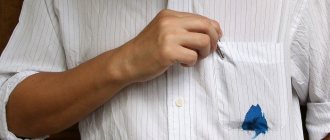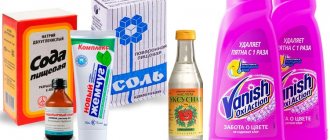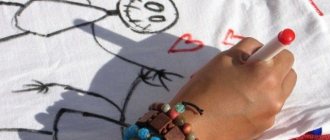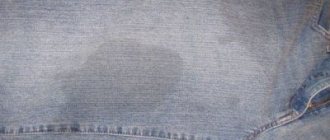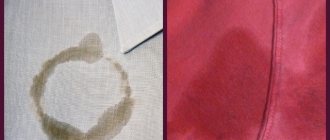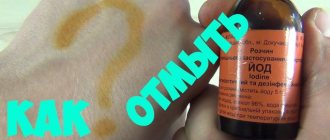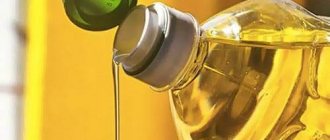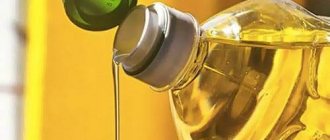How to remove tomato stains from clothes: methods
First, carefully remove the dried tomato pulp.
How to remove stains from tomatoes
You can quickly get rid of marks on clothes if:
- The juice did not have time to dry completely before washing . A fresh mark is easier to remove. Removing an old stain is often accompanied by destruction of the tissue structure.
- Initially, the stain was removed by hand using special products. Machine wash is the second stage.
- The treatment was carried out from the edges to the center of the spot, and not vice versa . Otherwise, the stain will spread in breadth.
The work is carried out on the table, having previously placed a cotton towel on it, which will absorb excess liquid.
The cleaning technology depends on the type of active substance that can remove the trace. There are 10 most popular methods that have proven their effectiveness in practice.
Laundry soap
Laundry soap is an effective and fabric-friendly product that allows you to preserve the color and structure of the material.
You can get rid of a tomato stain by quickly washing it with laundry soap.
Operating procedure:
- Bring a small amount of water to a boil.
- Pour boiling water over the stain.
- Lather generously with a bar of laundry soap.
- Clean with a soft brush or by hand.
To remove remaining stains, wash with laundry soap and rinse thoroughly with sufficient water.
If it is impossible to use boiling water quickly, you can get by with cool water.
Hydrogen peroxide
Considered the strongest bleach, suitable for white delicate materials.
Depending on the area of contamination, different methods are used:
- If the spot is small, you can apply a drop of undiluted hydrogen oxide to it.
- To remove a decent stain, you need to dilute 50 ml of peroxide in 3 liters of water, saturate the entire contaminated area with the resulting solution.
Be sure to read:
How to remove blood from jeans: the best ways to remove blood stains
In both cases, you need to wait 30 minutes, then manually wash the problem area. There should not be a trace left of the stain.
Table vinegar
The product allows you to clean kitchen towels and aprons from traces of tomatoes.
If the spot is small, you can apply a drop of undiluted hydrogen oxide to it
Work order:
- Moisten the stain with 5% vinegar.
- Leave for some time for the acid and dye to react.
- Wash the area with soap or dishwashing liquid.
You can clean natural cotton fabrics from abundant traces of tomato:
- Soak for several hours in a solution of vinegar and water, taken in a 1:1 ratio.
- Subsequent washing in the washing machine.
Vinegar is an aggressive substance; when working with it, you must be careful: do not inhale, if it gets on mucous membranes, rinse immediately with water.
Ammonia and salt
There are two recipes for cleaning tomato stains using ammonia and salt:
- Mix the ingredients. Apply the paste to the contaminated area and clean using circular rubbing movements.
- Sprinkle a thin layer of salt over the stain. Pour a small amount of alcohol on it and clean it in the same way.
Then, after 30 minutes, remove the dried salt crystals with a brush or hand and wash the product.
The combination of ammonia and salt is more effective than when the components are used separately.
Green tomato and talcum powder
The combination of ammonia and salt is effective for ketchup stains
The juice of an unripe tomato can remove stains from a ripe tomato.
Procedure:
- Squeeze the required amount of juice directly onto the stain.
- Wait until completely absorbed into the fabric.
- Clean with a soft brush or hands.
- Apply a thin layer of talcum powder and leave for 15 minutes.
- Wash the item.
The advantage of this method is that it is suitable not only for white, but also for colored clothes.
Milk
You can get rid of tomato stains using sour milk or whey. This is an effective and at the same time very gentle product, suitable for long-term processing, including soaking, of thin and delicate materials.
Rules of application:
- Warm the whey a little.
- Dip the dirty area or item completely (if size allows) into a container with serum.
- Leave for 30 minutes (overnight if heavily soiled).
- Wash completely.
Be sure to read:
How to remove brilliant green from linoleum: effective methods for removing fresh and dried stains
For better results, add laundry soap to the milk, previously crushed on a coarse grater.
Oxalic acid
To prepare a cleaning product from oxalic acid, you need to dissolve 2 g of acid in 200 ml of water.
Then use the resulting mixture to remove traces of tomato from clothes:
- Apply the product to the stained material and wait 30 minutes.
- Check the quality of cleaning, if necessary, leave for another 10 minutes.
- Rub the area with laundry soap.
- Wash and rinse clothes.
Potassium permanganate (potassium permanganate)
The product is suitable for products made of colored fabrics
As a result of using a solution of potassium permanganate, pink stains remain, visible on light-colored clothing. For this reason, the product is more suitable for products made of colored fabrics.
Stain removal technology:
- Pour a sufficient amount of warm water into a large basin.
- Take a little dry potassium permanganate (literally what will fit on the head of a match).
- Add the product to a bowl of water. Thoroughly dissolve the potassium permanganate; the water should turn pale pink.
- Place the clothes in the water and straighten out all the wrinkles.
- Leave for 20 minutes.
- Clean the problem area with your hands.
- Wash clothes in a machine.
All steps must be followed precisely, otherwise the tomato remover itself – potassium permanganate – will cause the appearance of difficult-to-remove stains.
Glycerin and ammonia
A combined solution of these components allows you to get rid of old traces of tomatoes.
This requires:
- Make a solution using 1 part ammonia (or ammonia) and 2 parts glycerin.
- Apply to the contaminated area.
- Leave for 3-4 hours. During the specified time, as a result of chemical reactions, the stain will be eliminated.
- Wash the product.
This is interesting: How to remove oil from clothes: vegetable oil, machine oil at home
Universal products for removing fresh stains
The easiest time to remove a sap stain is when it is just planted. To do this, use the following techniques.
Press a cloth moistened with cold water several times to the area of contamination. Then the fabric is generously sprinkled with table salt . Its crystals will absorb part of the fruit pigment from the clothing. As soon as possible, wash off the salt with cool water, and then wash the clothes with detergent. Soda, talc and starch act in the same way.
As an ambulance, for example, from traces of tomato juice, cold water . But you can only use it if you have the opportunity to change clothes. You need to do this:
- the item is turned inside out and a woven napkin folded in several layers or an old towel is placed under the front side;
- A clean, light cloth is moistened generously with water and, moving from the edges to the middle, the juice-dyed fabric is rubbed. This will prevent it from being absorbed into the fibers;
- After processing, the items are allowed to dry completely.
Do not use an iron to speed up drying. A new spot will appear.
- Removes juice stains from delicate fabrics from milk and its derivatives . The item is immersed in hot milk or whey and washed after a short soaking. These products are also used cold. But the soaking time is increased to 60 minutes. Kefir (yogurt) is suitable for combating fresh stains. It is applied locally for half an hour.
- Laundry soap gives good results when washing freshly soiled items . It is grated here, and then whipped into foam in a small amount of warm water. The stain is generously rubbed with a bar, and then the wardrobe items are dipped in a soap solution for 2 hours.
- Fresh stains from white or heavily dyed linen, cotton or viscose clothing can be effectively removed with very hot water . It is used in several ways:
- A contaminated wardrobe item is immersed in a filled basin for a few minutes and then washed in the usual way.
- Stretch the fabric with your hands and place the stain under the stream from the tap.
- The item is placed on top of an empty pan and secured with an elastic band (the result is something resembling an improvised hoop). The contamination is poured from a freshly boiled kettle until it disappears completely.
General recommendations
Several conditions must be observed to remove tomato stains. These include:
- Timeliness - the older the stain, the more difficult it is to remove. Already ten days of stains affect the structure of the fabric, so there is a greater chance of removing a fresh stain without losing the quality of the item;
- You should never put items with such contaminants in the washing machine. Be sure to wash everything by hand using appropriate products;
- You need to wash off the stain from the edges to the center, collecting dirt, and not rubbing it even more over the entire surface;
- You need to be careful when using acids to remove stains from colored clothing. Most of them are still intended for light-colored things, more often white;
- When treating contaminants, it is better to place clothes on a hard surface, placing an old cloth under it. Stains will be removed, and the rag will absorb dissolved dirt.
Types of stains
It is impossible to imagine preparations for the winter without tomatoes, because they can be preserved both independently and by adding them as an ingredient to other dishes. Consequently, during preparation or actual cooking, it is very easy to get dirt on your T-shirt or sweater, which must be dealt with immediately. But, if you have your own garden, then you know that not only orange spots from tomato juice can appear on things, but also green spots from tomato leaves.
Each type of pollution requires its own approach, so the following are distinguished::
- Green tomato tops stains. These stains are similar to grass stains and are quite difficult to remove. But the solution is hidden in the fruits themselves, so by taking an unripe green vegetable, you can neutralize traces of the tops with its juice.
- A stain of tomato paste (ketchup). These stains are the most common, so there are many products that can remove tomato sauce. To treat stains, use salt, acids (vinegar, lemon), ammonia, bleaches, etc.
- A trace from a fresh fruit. Similar contaminants, as in the example with tops, can be neutralized by the same vegetable, but completely green.
Features of cleaning multi-colored fabrics
The following universal products are effective and gentle stain removers for colored fabrics:
- Ace Oxi Magic;
- Udalix Oxi Ultra;
- Astonish OXY PLUS;
- Sarma Active 5 in 1.
The active oxygen present in their composition delicately removes stains without disturbing the structure or blurring the color of the fabric.
Suitable traditional remedies:
- milk;
- green tomato juice;
- potassium permanganate;
- laundry soap;
- glycerin or salt with ammonia.
The type of stain remover determines the stain removal technology:
- traditional - used first of all, they get rid of stains at the initial stage, before washing the item.
- universal stain removers are added directly to the machine simultaneously with powder or gel and remove old stains on clothes during general washing.
Read more ► How to remove stains on children’s clothing at home (fresh and old): what to do if nothing helps
Preparing for washing
We said earlier that preparing soiled clothes for washing is an important process that should not be skipped. In pursuit of saving time, we can send the item to the wash in the hope that traces of the tomato will disappear thanks to the powder. But such a rash decision will lead to the fact that the vegetable juice will adhere to the fabric and it will not be possible to remove it without damaging the tissue.
Therefore, to remove a tomato stain correctly, follow these tips::
- Speed of action . If you notice traces of juice on your clothes, proceed to cleaning immediately, since dried stains may require more aggressive treatment, which the fabric will not tolerate.
- Forget about the typewriter . If the traces are fresh, carefully clean the dirt with a brush, trying to remove particles of the vegetable. Then the washing is done manually and only then in an automatic machine.
- Precautionary measures . To prevent the stain from spreading over the area, place a napkin or towel under the item and the stained area. The contamination itself is cleaned from the periphery to the center, trying not to rub.
- Chemicals or improvised means . When choosing between aggressive substances and gentle compounds, consider the type of fabric, because the wrong product can ruin the item forever.
First aid for a fresh stain
If you just spilled a tomato drink on yourself, don't waste your time. It is best to sprinkle a fresh stain with salt. It will absorb any remaining liquid, making it easier to remove traces of juice. This method is not only suitable for tomato stains. You can use the method to remove contaminants from fatty broths, as well as beets.
Another way to help save fabric is regular laundry soap. To remove as much dirt as possible from the fabric fibers, scrub the dirt with a brush. Movements should be from the edge of the spot to the center.
Important! The brush should not be used on delicate fabrics. For example, wool and silk.
Why is tomato juice dangerous?
Tomato fruits contain a special coloring substance of the carotenoid family - lycopene. Carotenoids are responsible for the bright (yellow, orange, red) color of many vegetables, fruits and flowers - carrots, tomatoes, pumpkins, peppers. Lycopene is insoluble in water.
For this reason, stains on fabric from any tomato derivatives, be it tomato paste, juice, ketchup or sauce, are quite difficult to remove. And it is tomato juice that is the most harmless of those listed, since, unlike sauce, it contains no fat.
In any case, do not despair, some practical tips will help you save your favorite thing.
This is interesting: How to starch fabric at home: without starch, with sugar
Folk remedies
An effective remedy against the coloring pigment lycopene, which is found in tomato juice and leaves a mark on the fabric, is acid. It dissolves and bleaches such stains.
Green tomato
- If you wipe the stained area with green tomato juice, which contains a large amount of organic acids, the stain will dissolve.
- After this, it is enough to rinse the product with water.
Lemon acid
Instead of green tomato juice, you can use a solution of citric or oxalic acid. The principle of operation will be the same.
Ammonia
Read about: how to remove iodine from clothes: chemicals and folk methods.
An effective remedy for stains from tomato juice on clothes is a solution of ammonia (ammonia) - a colorless liquid with a very pungent odor.
- Dissolve a teaspoon of alcohol in two glasses of water.
- Moisten the stains with the solution, leave for a while, and rinse with water.
Useful
It is important to wear protective rubber gloves when using all chemicals and carry out all work in a ventilated area. Do not inhale ammonia vapor - it can cause respiratory arrest. Place a clean, dry cloth under the contaminated area.
Vinegar
The combination of vinegar and citric acid has a similar effect on tomato juice stains. Mix the vinegar solution with the juice of half a lemon, moisten a cotton pad with the resulting mixture and wipe the stain with it. After this, rinse the item.
When choosing a method, consider the type of fabric
Using ordinary vinegar, ammonia, peroxide and even lemon juice, do not forget about the material from which your item is made. After all, even seemingly harmless substances can damage the color and even the structure of the fabric.
Before sending it to the wash, do not forget to soak the items in a soapy solution, because laundry soap can remove dirt without harming the fibers. To wash tomato from fabric without consequences, always check the reaction of the material in an inconspicuous place (the wrong side, seam or fold).

